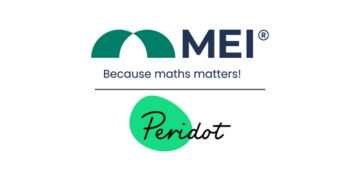FE is often talked about as the Cinderella sector. It is a phase of education that, proponents of this metaphor say, is too often overlooked by policymakers. Having spent time working across different parts of the education system, I always find myself drawn back to vocational education and training. That’s where it all happens.
Each new skills minister – and, increasingly, Prime Minister – wants to stamp their mark on the system, usually just as the ink has dried on next year’s college prospectuses. So far from treating FE like Cinderella, the government is treating it like the Fairy Godmother, hoping it will make all their wishes come true.
The post-16 white paper grants us a first look at this government’s vision for the skills system in the round. It is fully loaded – trying to present a coherent strategy for a national skills system that works locally for young people and adults, the unemployed and in-work, employers and individuals, and for FE and HE. You can feel the tussle between the Department for Work and Pensions, the Department for Education and the Treasury as you read the 72-page document. A single overarching narrative is hard to find – the kind of omission that no amount of fairy dust can cover.
This feels like shaky ground to embark on a programme of ambitious reforms from. Ministers should learn from recent qualification reform agendas as they plan the introduction of V Levels.
Most vocational qualification reform begins with good intentions: often, to simplify and to strengthen. The 2005 white paper that underpinned the 14-19 Diplomas following the Tomlinson Review referenced an “alphabet soup” of vocational qualifications. The 2019 ‘case for change’ to consolidate level 3 qualifications, following from the 2011 Wolf Review and 2016 Sainsbury Review aimed to shed light on an “extraordinarily complex and opaque” system. And, the 2023 Advanced British Standard (ABS) consultation document sought “clearer options” post-16.
While there is a zeal for change, too often the purpose of change either isn’t clear or isn’t shared. The 14-19 diplomas promised a bridge between academic and vocational routes, but their aims became muddled and neither universities nor employers really knew what they stood for. The Advanced British Standard (ABS) promised breadth, but quickly became shorthand for something that might simply replace A Levels and T Levels without a clear rationale. There was confusion over what T Levels were preparing young people for: work, apprenticeships, higher technical study, university, or all of the above at different times to different people.
The lesson for the V Levels rollout is simple: before thinking about structures, we need a unifying purpose – one that is sufficient enough to justify the upheaval and public investment of wholesale qualification reform.
What is the problem the government is trying to solve, and where does the current offer fall short? Is it about coherence, about quality, about labour market value, or is it a rebranding of the existing options?
Skills minister Baroness Smith said that V Levels would “build on what’s good about BTECs”. Applied general qualifications like BTECs, Cambridge Technicals and others have currency with the public and, crucially, employers. There will need to be work to ensure the value of V Levels is understood.
If V Levels are about creating a “line of sight” into work, there is too little in the white paper on careers information, advice and guidance. Too often, qualification reform focuses on simplification for employers without thinking about how young people will navigate the new system.
For learners who are still deciding which career path to take and want to take a mix of courses, retaining “A Level sized” Level 3 qualifications feel like the right way to go. The model is popular with industry leaders, and it polls well with the public: 74 per cent of adults think young people should be able to “mix and match” academic and vocational subjects to suit their interests.
But without a shared “why”, implementation could become a firefighting exercise. For those rolling out V Levels, the real test will be whether this reform finally learns the one lesson its predecessors never did: that coherence begins with purpose.















Your thoughts